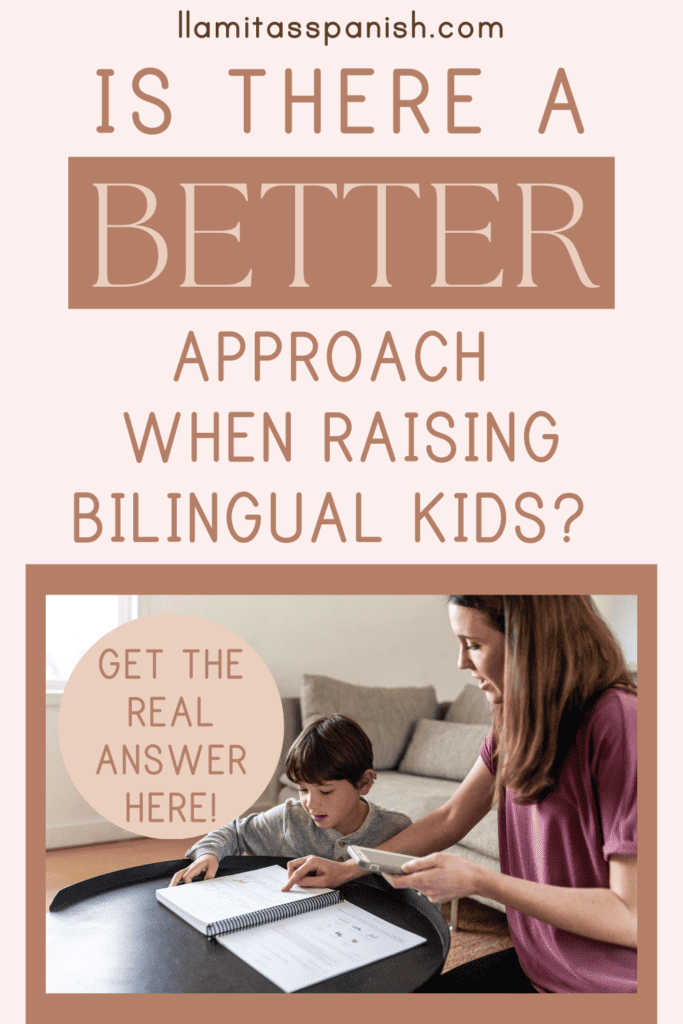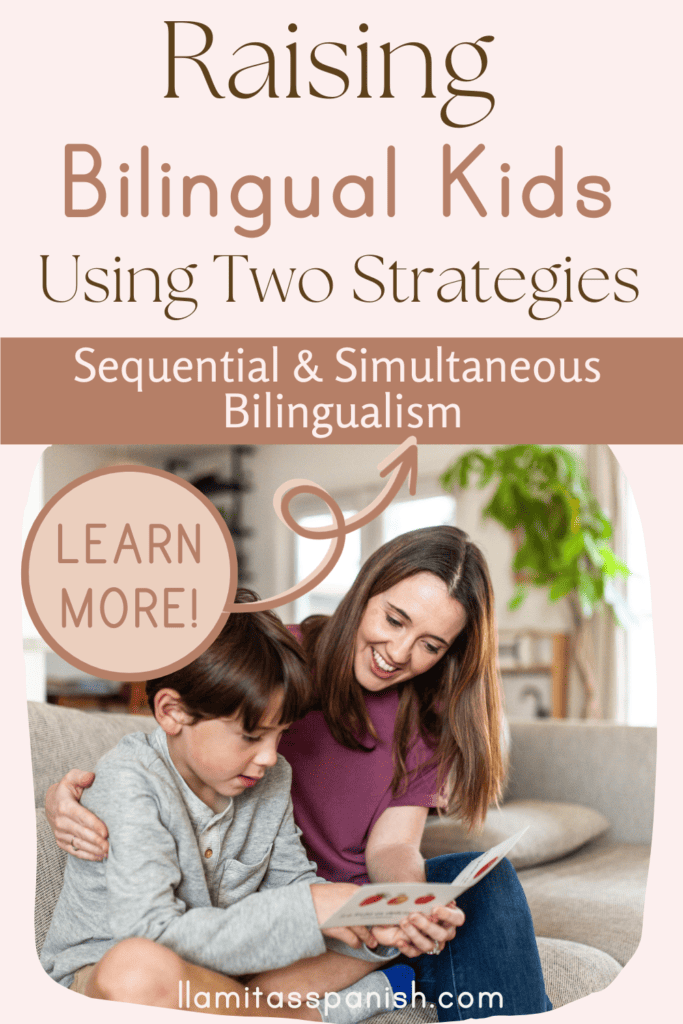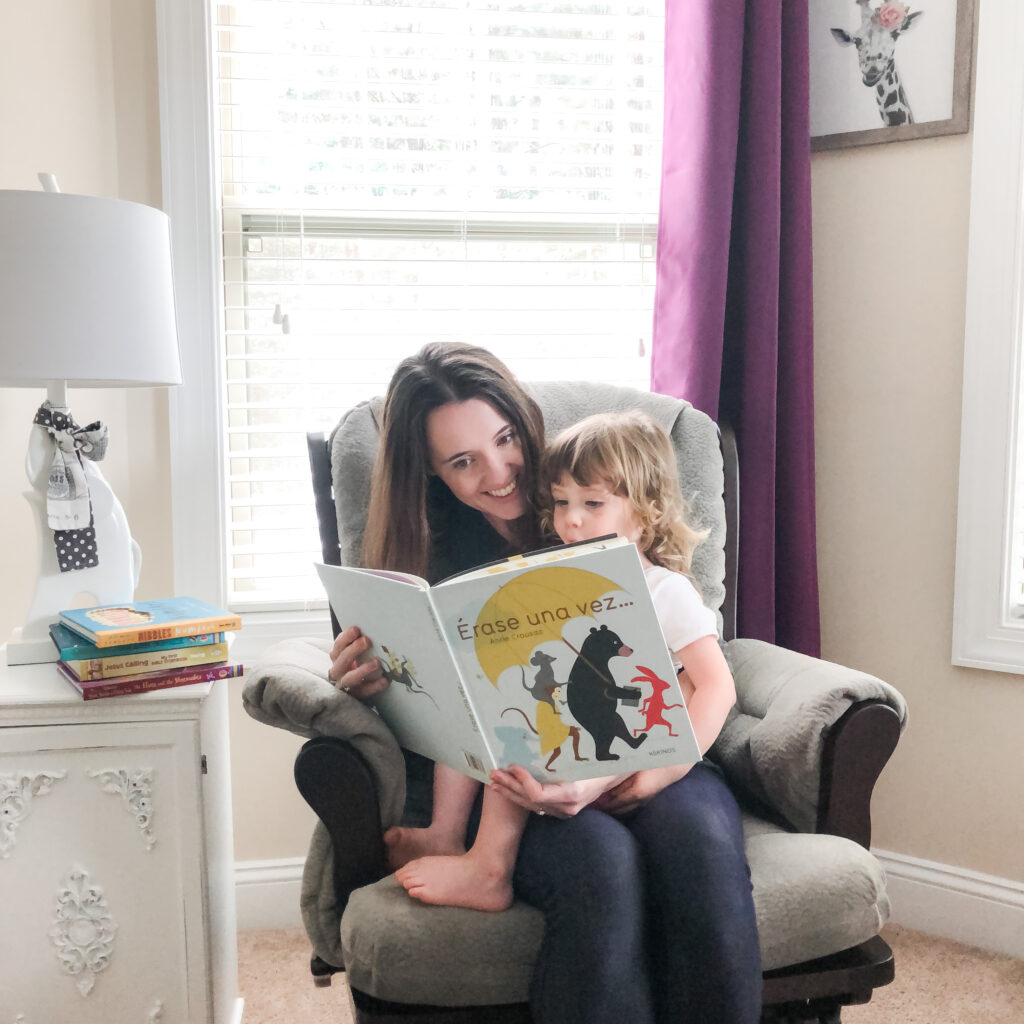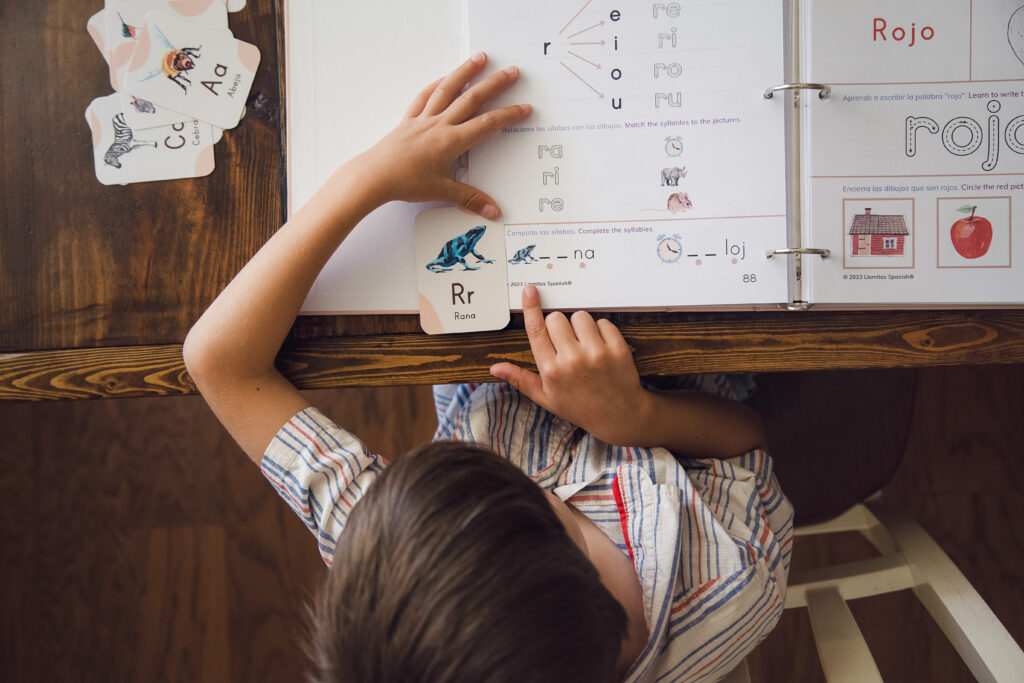In this post: Learn the difference between simultaneous bilingualism and sequential bilingualism, along with how you can teach your child Spanish with both strategies.
We already know that our kids are unique. And if you’re parenting more than one child, that fact quickly becomes even more clear. But did you know how they learn languages is unique too?
Even within one family, bilingual children will learn languages differently, and may be exposed to new languages differently—due to changing family situations, relocating, or even their own temperament or learning style.
Bilingualism can manifest differently in children depending on so many factors.
Even so, experts will often divide bilinguals into two categories depending on how and when their second language was acquired: sequential bilinguals and simultaneous bilinguals.

Let’s take a look at the difference between simultaneous and sequential bilingualism—and how you can raise bilingual kids with either strategy.
Table of Contents
What is Sequential Bilingualism?
Sequential bilingualism is when an individual learns a second language after learning their first language. In other words, sequential bilinguals are dominant in one language that they’ve learned since birth, and a second language is added later.
This is also sometimes referred to as successive bilingualism.
Sequential bilingualism can happen naturally as a result of circumstance—for example, if a family moves abroad. Or you may intentionally choose to introduce a second language to your child as they get older.
Both situations are common examples of sequential language learning, and neither is right or wrong.
What does sequential bilingualism look like?
Sequential bilingualism can look different for every family. There can be a variety of methods used and situational factors at play, such as:
- Time and Place method: With the Time and Place method, parents will choose a specific time and/or place to speak each language. For example, you might choose specific days of the week to speak Spanish only. If the second language is added after the first language is established, it’s considered sequential language learning.
- Minority Language at Home: This is common in families where at least one parent has immigrated from another country. A child may primarily use their parent’s language at home and add a second language once they enter school.
- Starting a dual language education: Many families may choose to add a second language once their child enters school, whether that means opting for a dual language immersion (DLI) program or adding a second language to your homeschooling.
- Moving abroad: When a family moves abroad to a country with a different language from their own, everyone will need to learn their new country’s language. This is yet another example of sequential bilingualism.
Related post: Why Raise Bilingual Kids? 10 Benefits of Bilingualism
What is Simultaneous Bilingualism?
Simultaneous bilingualism is when a child learns two languages from an early age, usually before age three. For some, this may mean being exposed to two (or more) languages from birth.
Just like with sequential bilingualism, simultaneous language learning might be the result of circumstance or the parents’ intentional choice. It’s common when the two parents speak different languages or a child attends a daycare that uses another language at a young age.
What does simultaneous bilingualism look like?
No situation is going to be exactly the same, but some common examples of simultaneous bilingualism are:
- One Parent One Language (OPOL) method: Bilingual parents often use this method so that their children are exposed to both languages at a young age. With this method, each parent will strictly use one language with the child. For example, dad might use Spanish only and mom might use English only.
- Minority Language at Home: This method can result in raising a simultaneous bilingual—as long as the child is being exposed to the dominant language in their environment (for example, at day care or around the community) at a young age.
- Time and Place method: The time and place method would be considered simultaneous learning if it’s started at an early enough age, too. Parents might choose to use a second language at certain places or times starting from birth.
Related post: A Bilingual Parenting Success Story with Adam Beck
Which is Better for Raising Bilingual Kids?
Let’s get this out of the way first: Neither one of these approaches is “better” than the other. Both simultaneous bilingualism and sequential bilingualism can result in fluency in two or more languages!

Just like every family is different, so is every bilingual individual and how they learn. And while we know that learning a language at a young age (according to a recent study at MIT, by age 10) can yield the best results, it’s never too late to learn a new language.
It’s true that sequential language learning usually means the child will always have a more dominant language. This is because a second language is added after a learner is already dominant in one.
However, some research also shows that some simultaneous language learning methods, like OPOL, can also result in uneven learning, or being dominant in one language over the other if the languages aren’t used equally.
As you can see, there’s really no one-size-fits-all answer to whether simultaneous or sequential learning is better. Each family’s unique family profile—location, heritage, family members, and bilingual goals, for example—will determine which approach works best for them.
Related post: Raising Bilingual Kids in the USA
Our Founder’s Personal Experience With Both Strategies
Llamitas Spanish® founder, Corrie Wiik, has experienced both sequential and simultaneous bilingualism with her two children.

She raised her firstborn son as a sequential bilingual, only introducing Spanish to him at preschool age. By this point, he was able to speak his dominant language, English, fluently.
This was certainly not an intentional decision to delay Spanish input. Rather, it was the result of several big changes in her family’s life during his infancy, including navigating the shock of being a first time mom in a new city (they relocated to Charlotte, NC from California immediately after he was born) and lack of Spanish in their new environment.
When her second child was born, however, Corrie was in a much more stable position (emotionally and physically!) and was able to immerse her daughter in Spanish from birth through lullabies and reading stories, developing a mixed language strategy at home.

Once her daughter turned two, they moved back to San Diego, California, where she was enrolled in a Spanish immersion preschool—something that her son had not had the opportunity to do in Charlotte.
Both her children have been following a dual language education since kindergarten, yet her children’s bilingualism has manifested quite differently.
Both are bilingual, but her younger daughter would mix her languages throughout her toddlerhood and preschool years. She’s an active bilingual—she speaks Spanish confidently and didn’t quite understand the separation between the languages until she was five.
Her older brother is also bilingual, but has always separated the two languages, never mixing them and tending towards passive bilingualism—understanding it well but responding in English until more recently.
Neither is better! Corrie is so proud of both of her children and celebrates their unique milestones in their Spanish fluency. She hopes that this mini case study will encourage you that there is no “right” way to raise a bilingual child. With consistency and patience, your children will blossom in their bilingualism!
Don’t slip into the comparison trap. Celebrate your language wins and know that this is a lifelong journey.
Related post: 10 Myths about Raising Bilingual Children
Llamitas Spanish Curriculum
Whatever your situation, Llamitas Spanish Curriculum was designed to support language learners from all backgrounds!
Each lesson includes bilingual scripts that allow beginners to teach using English instructions OR intermediate and native speakers to teach through Spanish immersion.
Because of this, parents raising both simultaneous and sequential bilingual students can seamlessly incorporate our curriculum into their lifestyle.
But that’s not it! There’s so much more to love about our Spanish curriculum:
- Just open & go. Everything is done for you—including complete lessons with scripts, activities, native speaker audio, music, and more!
- Beautifully illustrated. Our lessons are filled with beautiful illustrations and stories to keep kids engaged in the material. That’s so important with young learners!
- Cross-curricular learning. Thematic lessons allow your child to learn Spanish in context across subjects for more meaningful learning. Along with Spanish, they’ll be learning gaining skills in literacy, math, social studies, and more.
No matter where you are in your journey, Llamitas Spanish can support your family in raising bilingual kids!

